When I first started my fitness journey, I was overwhelmed by the sheer number of workout options available. I wanted something simple, effective, and accessible. That’s when I discovered the power of a pair of dumbbells and a focused 20-minute session. It changed everything.
Like many women, I admired the sculpted arms of fitness icons but thought achieving similar results required hours at the gym or expensive equipment. I was wrong. With consistency and the right techniques, I began to see noticeable changes in just a few months.
In this article, I’ll share the routines that worked for me. You’ll learn how to target key areas like the triceps and biceps without needing a complicated setup. Whether you’re a beginner or looking to refine your technique, these tips will help you build strength and confidence.
Remember, it’s not about perfection—it’s about progress. Stick with it, and you’ll be amazed at what you can achieve.
Key Takeaways
- Simple dumbbell routines can deliver impressive results.
- Consistency and proper technique are essential for success.
- No advanced equipment is needed for effective workouts.
- Focus on key areas like the triceps for balanced development.
- Short, focused sessions can fit into any schedule.
Introduction: My Journey to Sculpted Arms
Sculpting my arms wasn’t just about looks—it was about building resilience and self-assurance. When I started, I didn’t know much about fitness. I just knew I wanted to feel stronger. Over time, I discovered how targeted routines could transform my upper body.
One of the biggest challenges was finding time. As a busy woman, I needed workouts that fit into my schedule. I started with simple moves like bicep curls and tricep dips. These exercises didn’t require fancy equipment, just consistency and focus.
There were moments when I doubted myself. But seeing my muscles grow stronger kept me going. I realized that understanding my body was key. Tailoring my routine to my needs made all the difference.
Here’s a breakdown of my weekly routine that helped me achieve noticeable results:
| Day | Focus Area | Key Exercise |
|---|---|---|
| Monday | Biceps | Dumbbell Curls |
| Wednesday | Triceps | Tricep Dips |
| Friday | Full Upper Body | Push-Ups |
Consistency was my secret weapon. Even on busy days, I made time for short, focused sessions. Over time, I noticed not just physical changes, but also a boost in confidence. It’s amazing what a little dedication can do.
If you’re just starting, remember this: progress takes time. Celebrate small wins, and don’t be afraid to adjust your routine. Your journey is unique, and every step counts.
Benefits of a Targeted Arm Workout
Focusing on my upper body strength was a game-changer in my fitness routine. I quickly realized that using simple tools like dumbbells could deliver impressive results. Not only did my muscles become more defined, but I also felt stronger in everyday activities.
Improved Strength and Muscle Tone
One of the most noticeable benefits was the increase in strength. By incorporating moves like shoulder presses and bicep curls, I saw a significant improvement in muscle tone. Using light weights, I was able to challenge my muscles without overloading them.
Consistency was key. Over time, I noticed that my upper body became more resilient. Tasks like carrying groceries or lifting heavy objects became easier. It’s amazing how small changes can lead to big results.
Enhanced Confidence and Functional Fitness
Beyond physical changes, these workouts boosted my confidence. Seeing progress in my strength and appearance motivated me to keep going. I felt more capable and empowered in all areas of my life.
Functional fitness also improved. Whether it was reaching for something on a high shelf or playing with my kids, I felt more agile and capable. Strength training isn’t just about looks—it’s about feeling strong and capable every day.
“The strength you build in the gym translates to confidence in every aspect of life.”
Incorporating targeted workouts into my routine has been transformative. It’s not just about lifting weights—it’s about building a stronger, more confident version of myself.
Understanding the Anatomy of Your Arms
Understanding how your muscles work can transform your approach to fitness. When I started learning about the anatomy of my arms, I realized how important it is to target specific muscle groups. This knowledge helped me design a more effective workout routine and avoid common mistakes.
Discover the Secret to Fast Weight Loss!

Biceps and Triceps Explained
The bicep is a two-headed muscle located at the front of your upper arm. It’s primarily responsible for curling movements, like lifting a dumbbell. The triceps, on the other hand, are a three-headed muscle at the back of your arm. They provide the power needed for pushing and extending motions.
When I focus on my bicep during a curl, I feel a strong contraction that helps build definition. Similarly, engaging my triceps during extensions ensures balanced development. Knowing these roles has made my workout more intentional and effective.
Supporting Muscles and Their Roles
Beyond the bicep and triceps, there are smaller muscles that play a crucial role. The brachialis, for example, helps stabilize the elbow during a curl. Forearm muscles also contribute by improving grip strength and overall performance.
Understanding these supporting muscles has helped me avoid injuries and maximize gains. By visualizing and engaging each muscle group, I’ve been able to enhance my workout results significantly.
Arm Toning Exercises
Finding the right approach to upper body training transformed my fitness routine. I discovered that focusing on specific movements and understanding their purpose made a significant difference. Here’s why these routines work so well for women and the principles that make them effective.
Why These Routines Work for Women
Women often benefit from exercises that emphasize controlled movements and proper positioning. This approach helps engage the right muscle groups without overloading them. For example, focusing on the triceps and biceps with light weights can lead to noticeable results over time.
Research shows that women tend to see better gains by increasing volume rather than lifting to failure. This means more reps with manageable weights can be more effective than fewer reps with heavy weights. Consistency and form are key.
Key Principles Behind Effective Training
One of the most important principles is alternating exercises to target different muscle groups. This prevents plateaus and stimulates growth. For instance, pairing bicep curls with tricep dips ensures balanced development.
Another critical factor is understanding the “why” behind each move. Knowing which muscles are being worked helps you focus on proper positioning and maximize results. It’s not just about doing the exercise—it’s about doing it right.
“Effective training is about quality over quantity. Focus on form, and the results will follow.”
By incorporating these principles into your routine, you can build strength and achieve a more defined upper body. Remember, progress takes time, but with dedication, you’ll see the changes you’re working toward.
Essential Equipment for Effective Workouts
Building strength in my upper arms didn’t require a complicated setup—just the right tools. I quickly learned that simplicity and convenience were the keys to success. With minimal equipment, I was able to target my muscles effectively and see noticeable results.
A basic pair of dumbbells became my go-to tool. They’re versatile, affordable, and perfect for a variety of arm exercises. Whether I was doing curls or presses, these weights helped me focus on my upper arm muscles without needing a gym.
I also discovered the benefits of portable equipment like resistance bands. They’re lightweight, easy to store, and provide similar strength gains to traditional weights. Investing in these tools saved me both time and money.
One of the biggest myths I debunked was the need for expensive gym memberships. You don’t need complex machinery to build strength. A few key pieces of equipment are enough to create a solid training regimen. Quality over quantity is what truly matters.
Using the right tools also helped me optimize my workout time. Instead of spending hours at the gym, I focused on short, efficient sessions. This approach allowed me to target key muscle groups like the upper arm without feeling overwhelmed.
“The right equipment can transform your workout, making it more effective and enjoyable.”
If you’re just starting, remember this: you don’t need much to get started. A pair of dumbbells, resistance bands, and a mat are enough to create a powerful routine. With consistency and the right tools, you’ll see progress in no time.
Home Workout Routines for Busy Women
Balancing work, family, and fitness seemed impossible until I discovered the power of home workouts. As a busy woman, I needed a way to stay active without sacrificing time or energy. That’s when I realized that a 20-minute routine could be just as effective as a gym session.
One of the biggest advantages of working out at home is the elimination of travel time and gym fees. You don’t need fancy equipment or a lot of space—just a few simple tools and the determination to stay consistent. It’s all about making fitness fit into your life, not the other way around.
Burn Fat & Boost Your Metabolism!
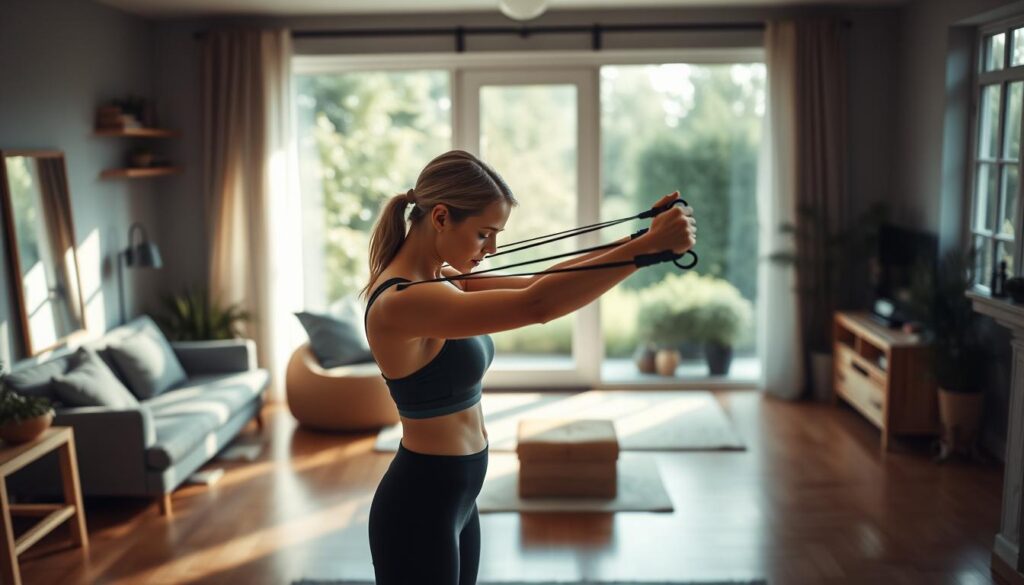
Here’s a sample routine that has worked wonders for me. It focuses on high-impact moves that target key muscle groups efficiently:
- Warm-up: 3 minutes of dynamic stretches.
- Bicep curls: 2 sets of 12 reps.
- Tricep dips: 2 sets of 10 reps.
- Push-ups: 2 sets of 12 reps.
- Cool-down: 3 minutes of stretching.
This routine takes less than 20 minutes and can be done in the comfort of your living room.
Proper form is crucial, especially when you’re working out without a coach. I found that watching instructional videos and practicing in front of a mirror helped me perfect my technique. Consistency is key, and even on busy days, I make time for these short sessions.
“Home workouts have been a game-changer for me. They’re efficient, effective, and fit seamlessly into my schedule.”
Personal experiences have shown me that home workouts are not just a trend—they’re a practical solution for busy women. Whether you’re a mom, a professional, or both, finding a way to prioritize your health is possible. Start small, stay consistent, and you’ll see the results you’re working toward.
Full-Body vs. Isolated Arm Training Approaches
Exploring different training methods opened my eyes to the power of strategic workouts. When I started, I wasn’t sure whether full-body or isolated training would help me reach my goal faster. Over time, I learned that both approaches have unique benefits, depending on your fitness objectives.
Full-body workouts are ideal for those with limited time. They engage multiple muscle groups in one session, boosting overall strength and endurance. On the other hand, isolated training allows you to focus on specific areas, like the back or biceps, for targeted development.
Benefits of Antagonistic Pairing
One technique that transformed my routine was antagonistic pairing. This method involves working opposing muscle groups, like the biceps and triceps, in the same session. While one group works, the other recovers, maximizing efficiency and reducing downtime.
For example, pairing bicep curls with tricep dips ensures balanced development. This approach not only saves time but also helps prevent muscle imbalances. It’s a game-changer for anyone looking to optimize their workouts.
Supersets, Tri-Sets, and Their Impact
Supersets and tri-sets are another way to elevate your training. Supersets involve performing two exercises back-to-back with minimal rest, while tri-sets include three. These techniques increase intensity and keep your heart rate elevated, enhancing both strength and cardiovascular fitness.
Here’s a simple superset example:
- Bicep curls (12 reps)
- Tricep dips (10 reps)
This combination targets both the front andbackof your upper body, ensuring a balanced look.
“Supersets and antagonistic pairing are powerful tools for achieving balanced muscle development and efficiency.”
Integrating these methods into your routine can help you reach your goal faster. Start with one or two supersets per session and gradually increase as your endurance improves. Remember, consistency is key to seeing results.
Step-by-Step Guide to a 20-Minute Arm Workout
Creating a dedicated space for my workouts made all the difference in staying consistent. A 20-minute arm workout is perfect for busy schedules, and with the right setup, you can achieve great results. Here’s how to get started.
Setting Up Your Workout Space
First, choose a quiet area with enough room to move freely. You don’t need much—just a mat, a pair of dumbbells, and a stable surface for exercises like dips. Keeping your equipment organized helps you stay focused and efficient.
If you’re short on space, a corner of your living room or bedroom works fine. The key is to make it a place where you feel motivated to hold your routine consistently.
Proper Form and Injury Prevention Tips
Proper form is essential to avoid injuries and maximize results. Start with light weights to practice each movement. For example, during bicep curls, keep your elbows close to your sides and avoid swinging the weights.
Here’s a simple routine to follow:
- Bicep curls: 2 sets of 12 reps
- Tricep dips: 2 sets of 10 reps
- Push-ups: 2 sets of 12 reps
Focus on quality over speed. Pause at the top of each movement to feel the tension in your muscles. This ensures maximum engagement and better results over time.
“Taking the time to perfect your form will pay off in the long run. Slow and controlled movements are key.”
Adjust your routine based on your fitness level and available equipment. Whether you’re using dumbbells or resistance bands, the goal is to challenge yourself while maintaining proper technique. Consistency and attention to detail will help you see progress.
Top Bicep Exercises for Stronger Arms
I discovered that focusing on specific muscle groups could transform my strength and confidence. When I started incorporating bicep-focused moves into my routine, I noticed a significant improvement in my upper body strength. These exercises are simple yet effective, making them perfect for anyone looking to build stronger arms.
Classic Bicep Curls and Variations
The classic bicep curl is a foundational move that targets the front of your upper arm. Using dumbbells, I focus on controlled movements to maximize muscle engagement. Variations like concentration curls and EZ bar curls add diversity to my routine, ensuring balanced development.
Here’s a breakdown of my favorite bicep curl variations:
| Exercise | Target Area | Reps |
|---|---|---|
| Classic Bicep Curl | Biceps | 12-15 |
| Concentration Curl | Biceps (isolated) | 10-12 |
| EZ Bar Curl | Biceps (max activation) | 8-12 |
These moves are easy to integrate into a full-body workout or as part of a dedicated arm session. Consistency is key to seeing results.
Hammer Curls for Balanced Development
Hammer curls are another essential move in my routine. They target not only the biceps but also the brachialis and brachioradialis, ensuring balanced arm strength. Holding the dumbbells with a neutral grip, I perform 10-12 reps per set.
This exercise is particularly effective for improving grip strength and overall arm symmetry. It’s a simple yet powerful addition to any workout.
“Hammer curls are a game-changer for balanced arm development. They engage multiple muscle groups, making them highly effective.”
By incorporating these exercises into my routine, I’ve seen noticeable improvements in both strength and definition. Whether you’re a beginner or advanced, these moves can help you achieve your fitness goals.
Dynamic Tricep Workouts for Defined Arms
Developing defined triceps became a priority in my fitness journey when I realized their impact on overall arm strength. While many focus on the biceps, the triceps make up two-thirds of the arm’s size and are essential for a balanced, sculpted look. Incorporating dynamic tricep workouts not only enhances appearance but also improves functional strength.
Skull Crushers and Alternate Extensions
Skull crushers are a staple in my routine for targeting the long head of the triceps. I focus on a controlled range of motion, lowering the weight toward my forehead and extending fully without locking my elbows. This ensures constant tension on the muscle, maximizing growth potential. I typically perform 3 sets of 12-15 reps with moderate weight.
Alternate tricep extensions, like overhead rope extensions, are another effective move. These stretch the triceps, promoting hypertrophy and correcting imbalances often caused by overtraining the biceps. I aim for 3 sets of 12-15 reps, ensuring smooth transitions between repetitions.
Here’s a quick breakdown of my tricep routine:
- Skull crushers: 3 sets of 12-15 reps
- Overhead rope extensions: 3 sets of 12-15 reps
- Tricep dips: 3 sets of 12-15 reps
Proper form is crucial to avoid injury. I always keep my elbows close to my body during skull crushers and maintain a neutral grip for alternate extensions. Consistency and technique are key to seeing results.
“Dynamic tricep workouts not only build strength but also create a balanced, defined look that complements overall upper body development.”
By incorporating these exercises into my routine, I’ve noticed a significant improvement in my arm strength and appearance. Whether you’re a beginner or advanced, focusing on the triceps can help you achieve a more balanced and sculpted upper body.
Incorporating Shoulder Work for a Balanced Upper Body
Achieving a balanced upper body requires more than just focusing on one muscle group—it’s about synergy and strength. While many prioritize their arms, the shoulders play a crucial role in creating a harmonious and functional physique. I learned this firsthand when I started integrating shoulder-specific exercises into my routine.
Strong shoulders not only enhance your appearance but also improve posture and reduce the risk of injuries. By targeting the deltoids and engaging the core, you can build a stable foundation for all your upper body movements. Here’s how I incorporated shoulder work to achieve a balanced look.
Overhead Presses and Lateral Raises
Overhead presses are a cornerstone of shoulder training. They target the front and side deltoids, promoting strength and definition. I focus on maintaining proper alignment from my hip to my floor to ensure stability and prevent strain.
Lateral raises, on the other hand, isolate the side delts for a more sculpted look. I use lighter weights and controlled movements to avoid engaging the trapezius. These exercises are simple yet highly effective for building shoulder strength.
Rear Delt and Core Engagement Strategies
Engaging the rear delts is essential for balanced shoulder development. I incorporate exercises like rear delt flys and face pulls to target this often-neglected area. Keeping my core tight during these movements enhances stability and maximizes results.
Here’s a quick routine I follow to engage both the rear delts and core:
- Rear delt flys: 3 sets of 12-15 reps
- Face pulls: 3 sets of 12-15 reps
- Plank with shoulder taps: 3 sets of 30 seconds
“Balanced shoulder work not only improves your physique but also enhances functional strength and reduces injury risk.”
Proper form is critical. I always ensure my movements are controlled and aligned from my hip to my floor. This attention to detail has helped me achieve better results and avoid common pitfalls.
By integrating shoulder exercises into my routine, I’ve noticed a significant improvement in my upper body strength and appearance. Whether you’re a beginner or advanced, focusing on your shoulders can help you achieve a more balanced and functional physique.
How to Progress Your Arm Workout Over Time
Progressing in my fitness routine became easier once I understood the importance of gradual changes. To build strength and see results, I learned to focus on increasing the challenge of my workouts over time. This approach, known as progressive overload, is the top strategy for sustained growth.
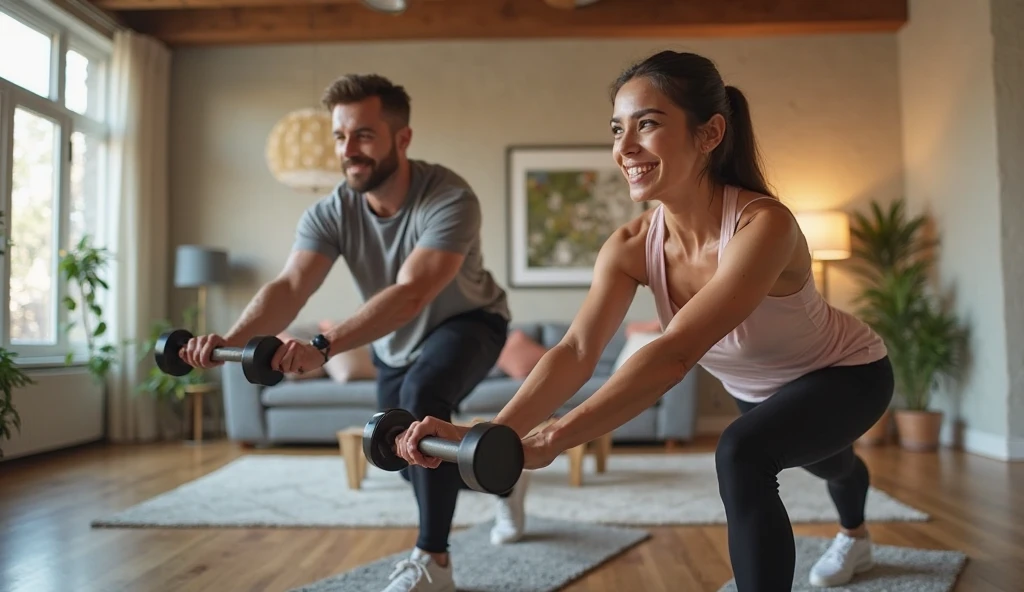
Increasing Weight and Training Intensity
One of the most effective ways to progress is by adding extra weight. I started with lighter dumbbells and gradually increased the load as my strength improved. This method ensures that your muscles are constantly challenged, leading to better results.
Another key factor is intensity. Incorporating more challenging variations, like slow, controlled movements or supersets, keeps your muscles engaged. For example, I alternate between bicep curls and tricep dips to maximize efficiency.
Monitoring Form and Safety
As I increased the difficulty, I paid close attention to my form. Maintaining the correct back starting position is crucial to avoid injuries. I always ensure my back is straight and my core is engaged during exercises like overhead presses.
Here’s a quick guide to progressive overload:
| Week | Weight Increase | Intensity Adjustment |
|---|---|---|
| 1-2 | +2 lbs | Slow, controlled reps |
| 3-4 | +5 lbs | Supersets |
| 5+ | +10 lbs | Advanced variations |
The Role of a Trainer
Working with a knowledgeable trainer can accelerate your progress. They provide personalized guidance and ensure you’re using the correct back starting position for each exercise. I found this especially helpful when I plateaued.
“Progressive overload is not about rushing—it’s about consistent, intentional growth. Patience and proper technique are your best allies.”
By making small, incremental changes, I’ve seen significant improvements in my strength and endurance. Whether you’re adding weight, increasing intensity, or refining your form, the key is to stay consistent and listen to your body.
Tips for Getting the Most Out of Your Routine
Optimizing my fitness results required more than just consistent workouts—it demanded a holistic approach. I quickly learned that nutrition, recovery, and proper form are just as important as the exercises themselves. By focusing on these areas, I was able to maximize my progress and avoid common pitfalls.
Nutrition, Protein Intake, and Recovery
Nutrition plays a critical role in muscle repair and growth. I made sure to include sufficient protein in every meal, as experts recommend. This not only supported my training but also helped me recover faster. Foods like eggs, lean meats, and plant-based proteins became staples in my diet.
Recovery is equally important. I prioritized rest days to allow my muscles to heal and grow. Stretching and foam rolling became part of my routine to reduce soreness and improve flexibility. Remember, your body needs time to rebuild after intense workouts.
Proper Form and Injury Prevention
Maintaining the correct starting position during exercises is crucial to avoid injuries. For example, keeping my elbow aligned with my head during overhead presses ensured proper form and maximum engagement. I also focused on controlled movements to prevent strain on my joints.
Here are a few tips to maintain proper form:
- Keep your back straight and core engaged.
- Avoid locking your joints during movements.
- Use lighter weights to perfect your technique before increasing the load.
“Proper form isn’t just about avoiding injuries—it’s about maximizing results and building a strong foundation for progress.”
Balancing Diet and Training
Balancing dietary goals with training demands can be challenging, but it’s essential for sustainable progress. I tracked my calorie intake to ensure I was fueling my body without overeating. Small adjustments, like reducing my daily intake by 10%, helped me maintain a lean physique while building muscle.
My personal strategy includes planning meals ahead of time and staying hydrated throughout the day. These habits not only support my fitness goals but also improve my overall well-being.
How I Stay Motivated with Consistent Arm Training
Staying motivated with consistent training has been a journey of trial and error for me. Over time, I’ve discovered strategies that keep me engaged and focused on my goals. One of the most effective techniques is mixing up my routine. By trying new variations and challenging myself, I avoid boredom and stay excited about my progress.
Setting small, achievable goals has also been a game-changer. Instead of aiming for big milestones, I focus on weekly targets. For example, increasing my reps or perfecting my form with the palm facing the right way during curls. These small wins keep me motivated and build momentum over time.
Visual progress tracking has been another key factor. I take photos and notes to see how far I’ve come. Celebrating these victories, no matter how small, reminds me of the effort I’ve put in and keeps me committed.
Overcoming obstacles like fatigue or a busy schedule requires planning. I prioritize my workouts by scheduling them like appointments. Even on tough days, I remind myself that consistency is more important than perfection.
Proper form is non-negotiable. Ensuring my hand position is correct, like keeping the palm facing upward during bicep curls, maximizes results and prevents injuries. This attention to detail has made a big difference in my progress.
Here’s a quick table summarizing my motivation strategies:
| Strategy | Benefit |
|---|---|
| Mixing up routines | Keeps workouts exciting |
| Setting small goals | Builds momentum |
| Visual tracking | Shows progress |
| Prioritizing workouts | Ensures consistency |
Reflecting on my journey, I’ve learned that steady, consistent effort pays off. It’s not about perfection—it’s about showing up and doing the work. Remember, every small step brings you closer to your goals.
“Motivation comes from action, not the other way around. Start small, stay consistent, and the results will follow.”
Final Thoughts on Sculpting Your Arms
Achieving strong, sculpted arms is more about strategy than sheer effort. Throughout my journey, I’ve learned that the right combination of exercises, equipment, and techniques makes all the difference. From bicep curls to tricep dips, each move has its place in a balanced routine.
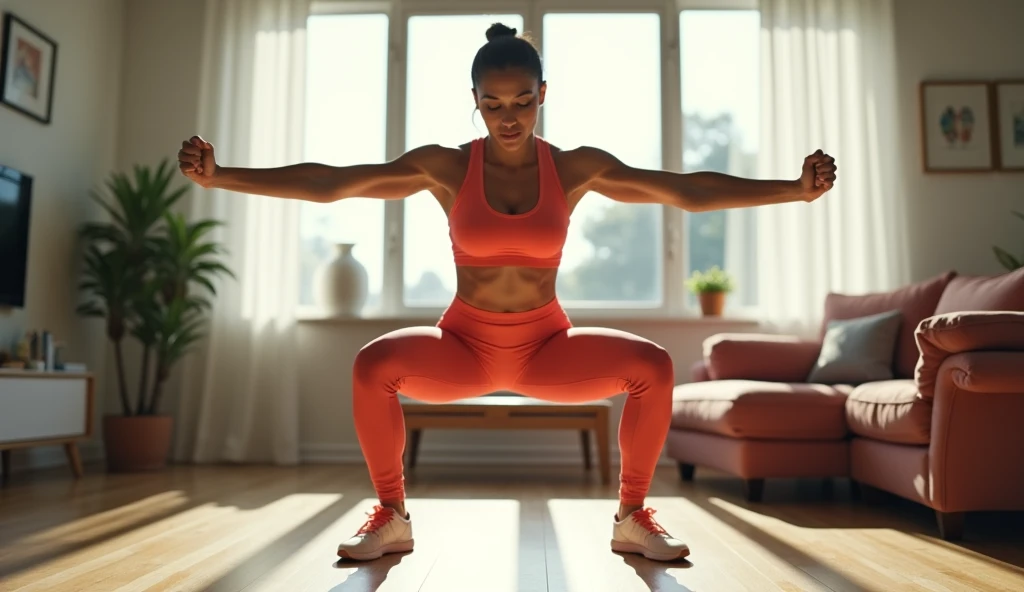
One of the most important lessons is the role of your core. Engaging your core during exercises like overhead presses ensures stability and maximizes results. Similarly, maintaining the correct back starting position prevents injuries and enhances performance.
Blending dedicated training with proper nutrition and recovery is the best arm strategy for long-term success. Remember, it’s not just about lifting weights—it’s about creating a sustainable routine that fits your lifestyle.
Here’s a quick recap of what works:
- Focus on compound movements for balanced development.
- Use lighter weights to perfect your form before increasing intensity.
- Prioritize recovery to allow your muscles to heal and grow.
“Consistency and attention to detail are the keys to achieving your fitness goals. Every small step counts.”
Finally, believe in your ability to transform your upper body. With dedication and the right approach, you can achieve the results you’re working toward. I’d love to hear about your progress—feel free to share your experiences and tips for continual improvement!
Conclusion
Transforming my upper body strength taught me the value of consistency and proper technique. From understanding muscle anatomy to executing effective routines, every step has been a learning experience. The journey isn’t just about physical changes—it’s about building confidence and resilience.
Every rep counts when you focus on quality over quantity. Keeping your palm secure during movements ensures proper form and maximizes results. These small details make a big difference in achieving your goals.
Remember, success comes from dedication, balanced nutrition, and ongoing progress. Apply the strategies shared here to your routine, and don’t hesitate to adjust as needed. Your fitness journey is unique, and every effort brings you closer to your goals.
I’d love to hear about your progress! Share your experiences and tips in the comments. Together, we can continue exploring new ways to advance our fitness journeys.

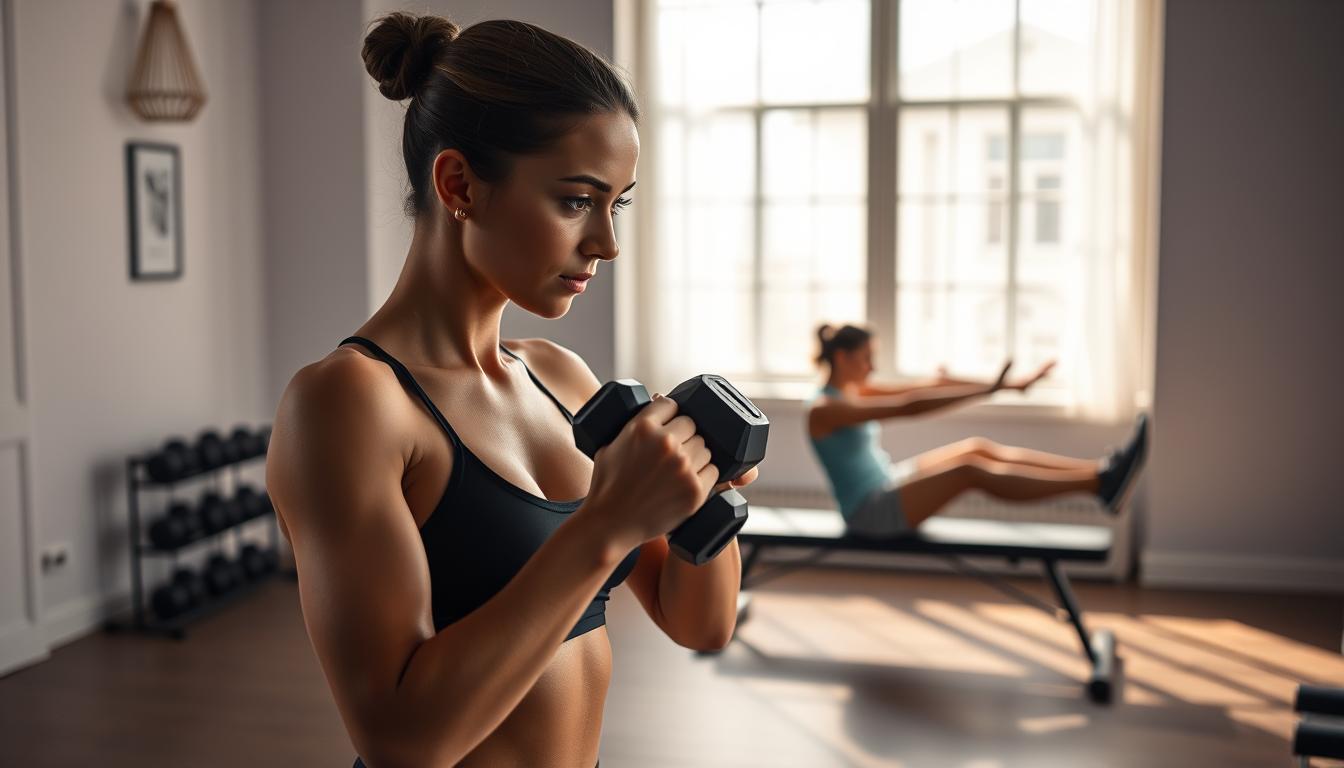

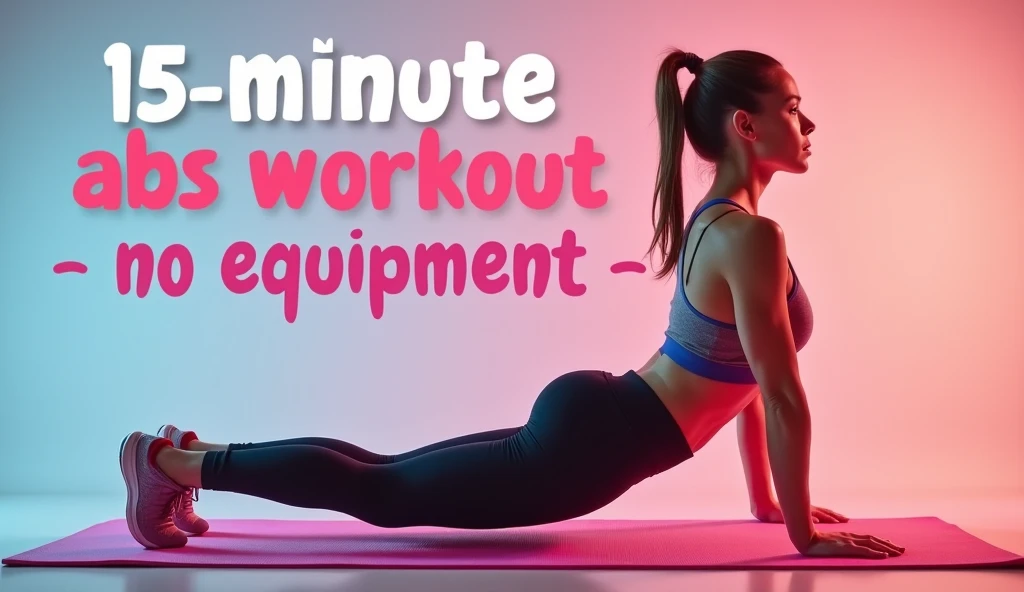
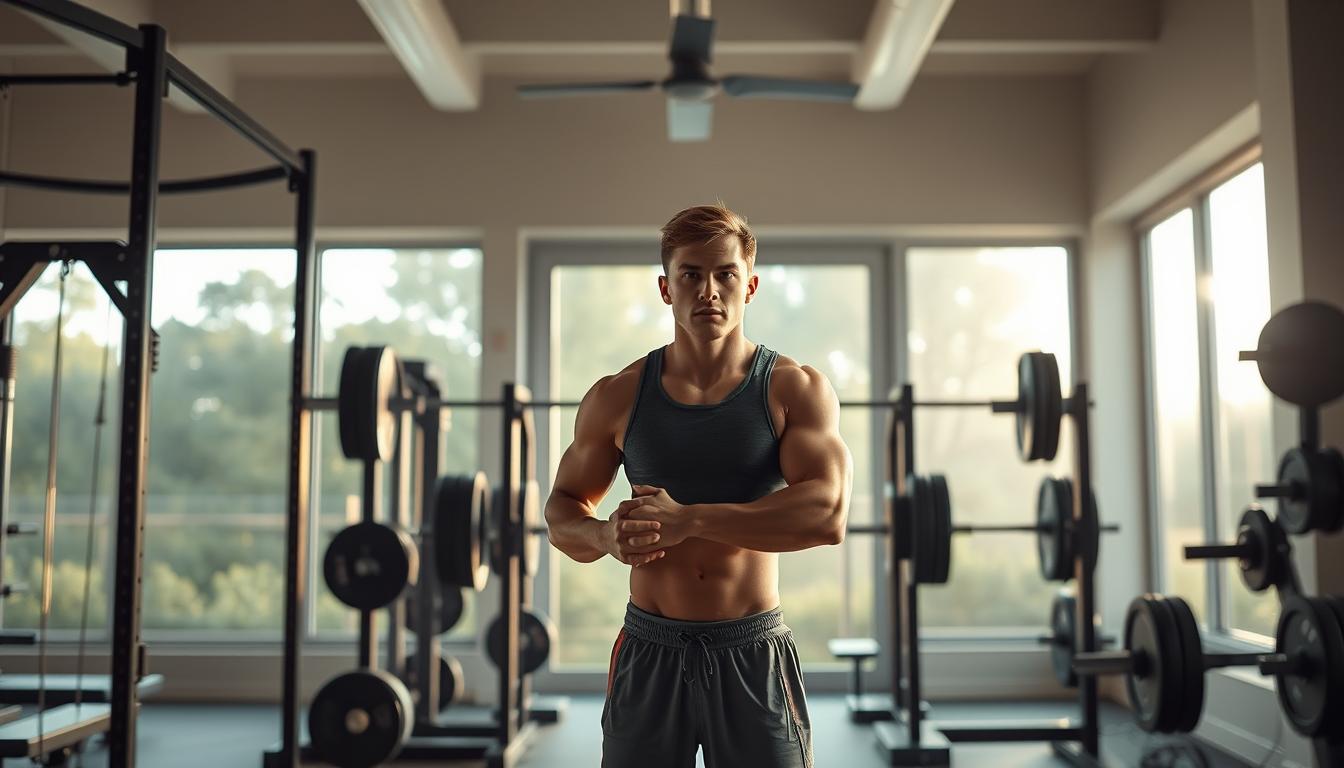
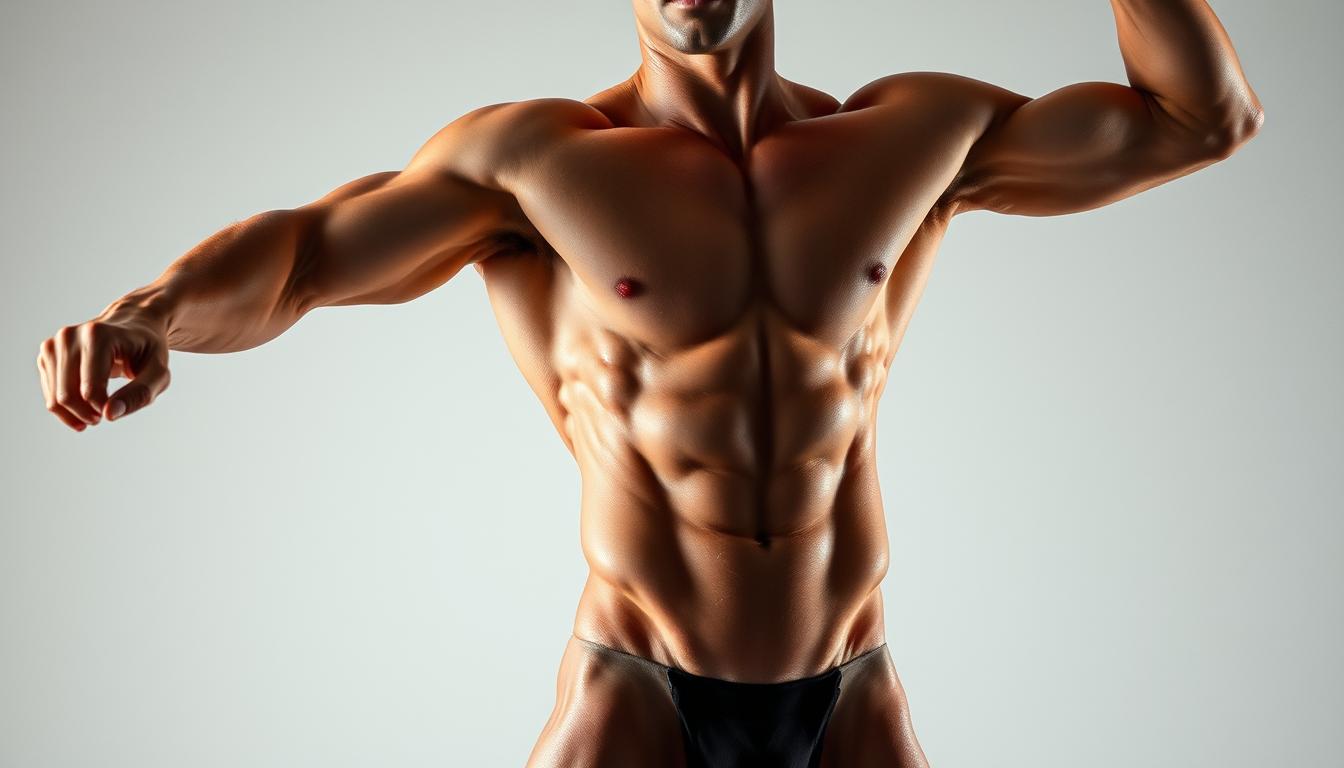

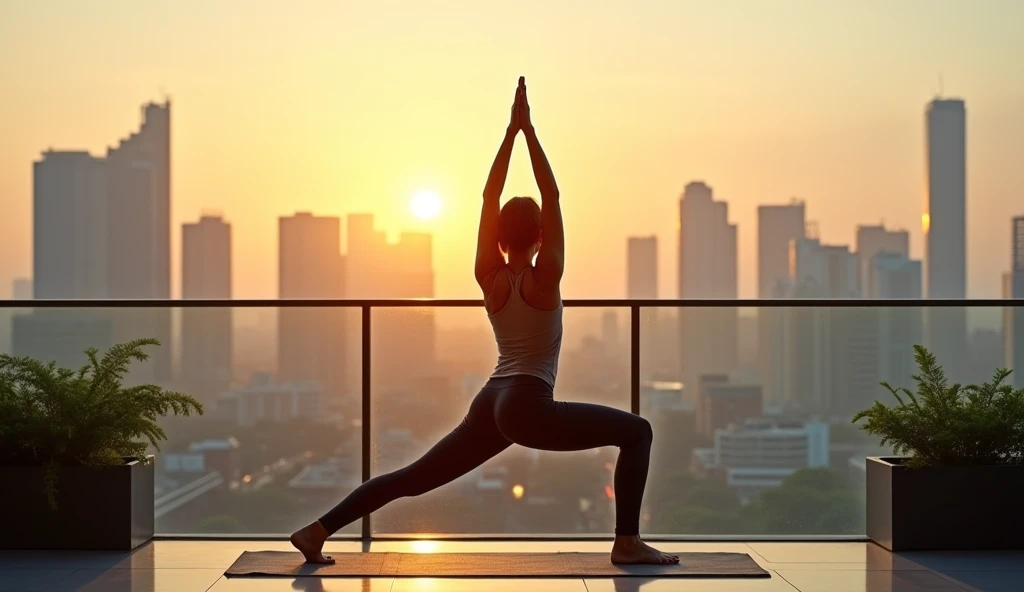
Comment on “Best Arm Toning Exercises for Women: Effective Routines”